

Indonesia Offshore
Tarakan Offshore
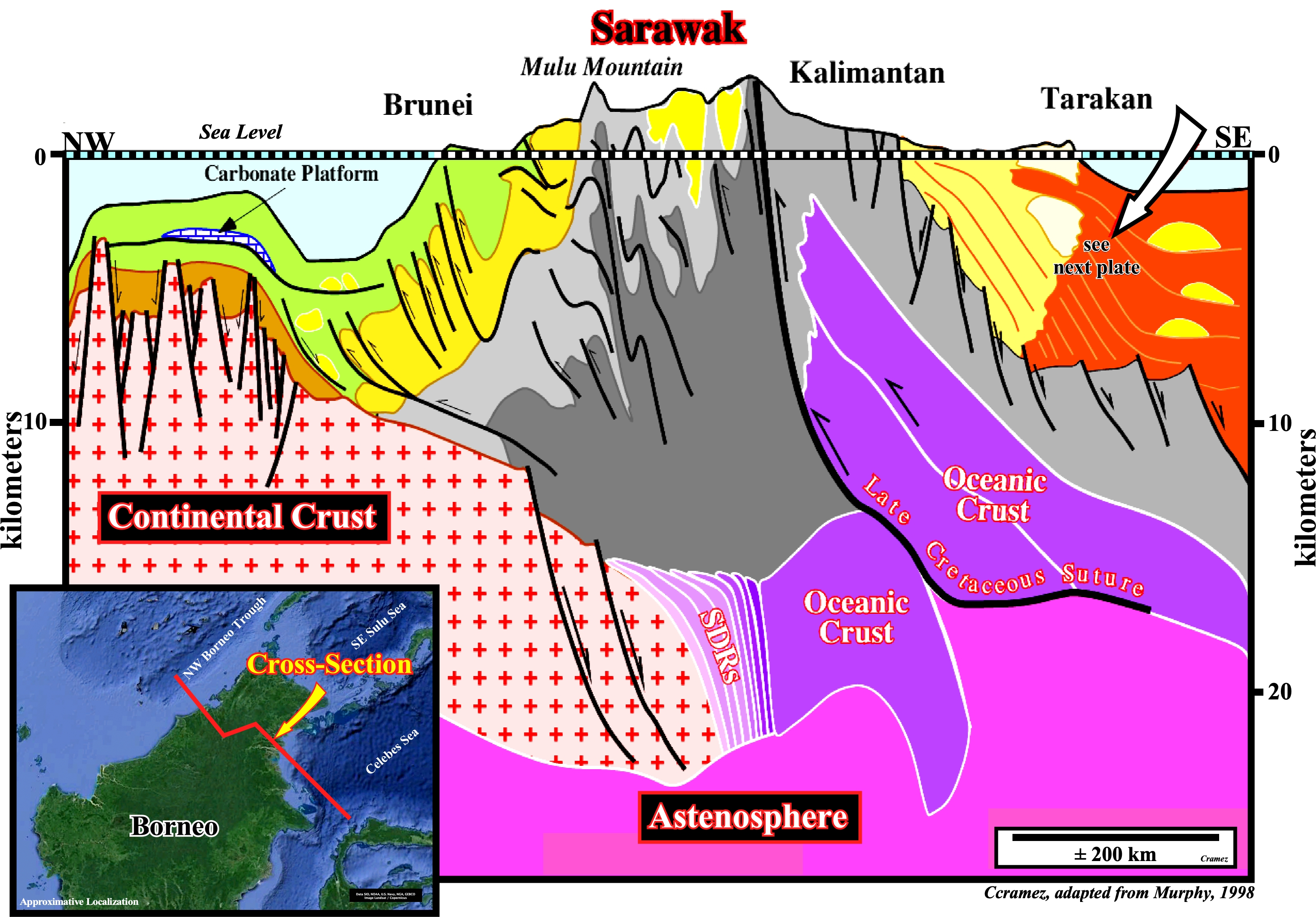
This geological cross-section through Sarawak, between the NW Borneo trough and the Celebes Sea gives the geological setting of the Tarakan offshore, which corresponds to a Plio-Pleistocene non Atlantic-Type divergent margin overlying a Miocene backarc Basin developed on the overriding plate of a Late Cretaceous geological suture, which in plate tectonics, is seen as the remains of a subduction zone and the terranes that it puts together interpreted as fragments of different tectonic plates (https://en.wikipedia.org /wiki/ Suture_geology).


On this tentative geological interpretation, the NE progradation of the non Atlantic-Type divergent margin, toward the Celebes marginal sea, over the backarc basin sediments, probably of the sag phase, is quite obvious. A normal faulting system seems to contribute on the margin progradation. Locally, some original normal faults seems to be reactivated as reverse faults, which is, absolutely, normal taking into account the compressional global geological context of the region located within the Meso-Cenozoic megasuture.
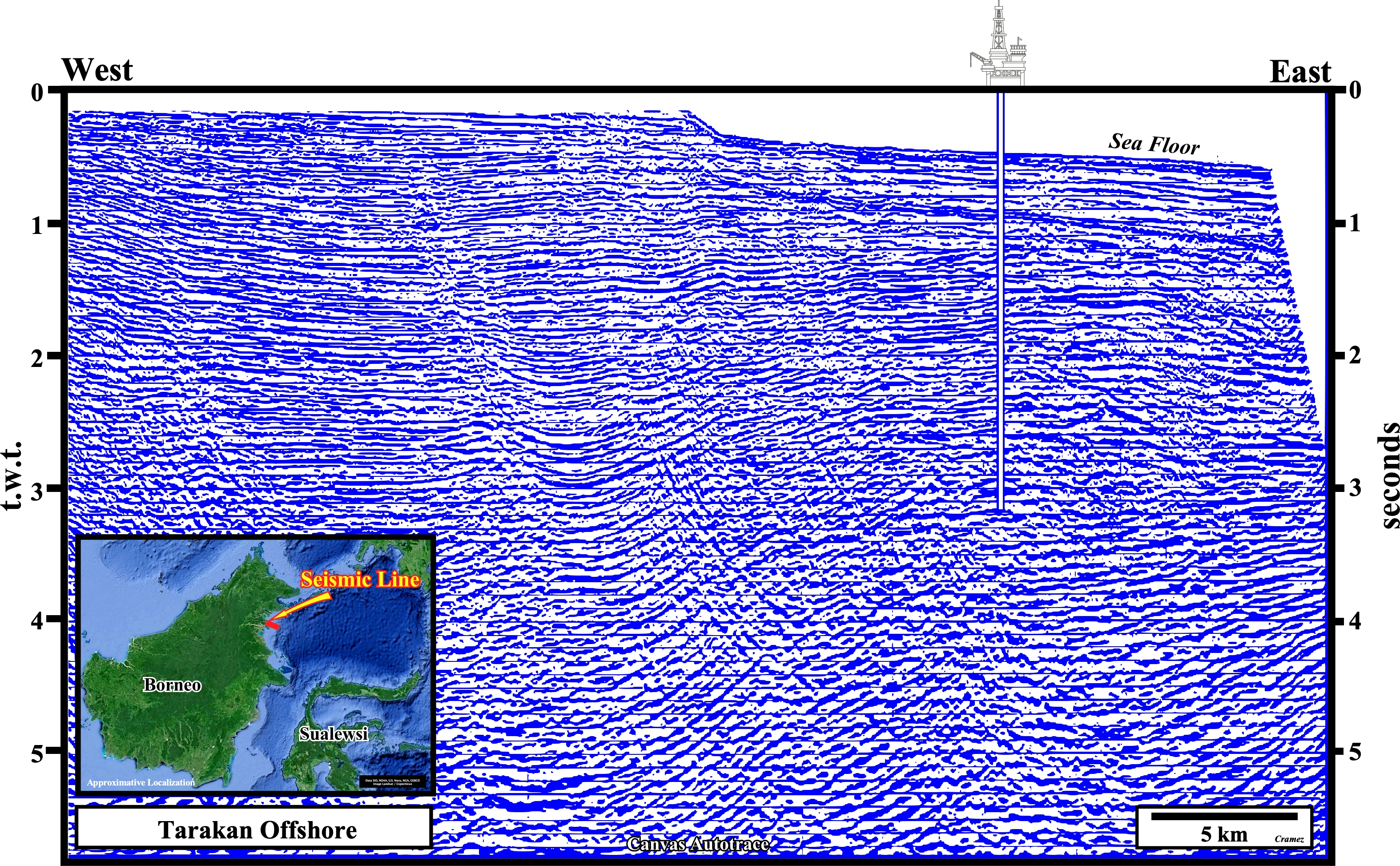
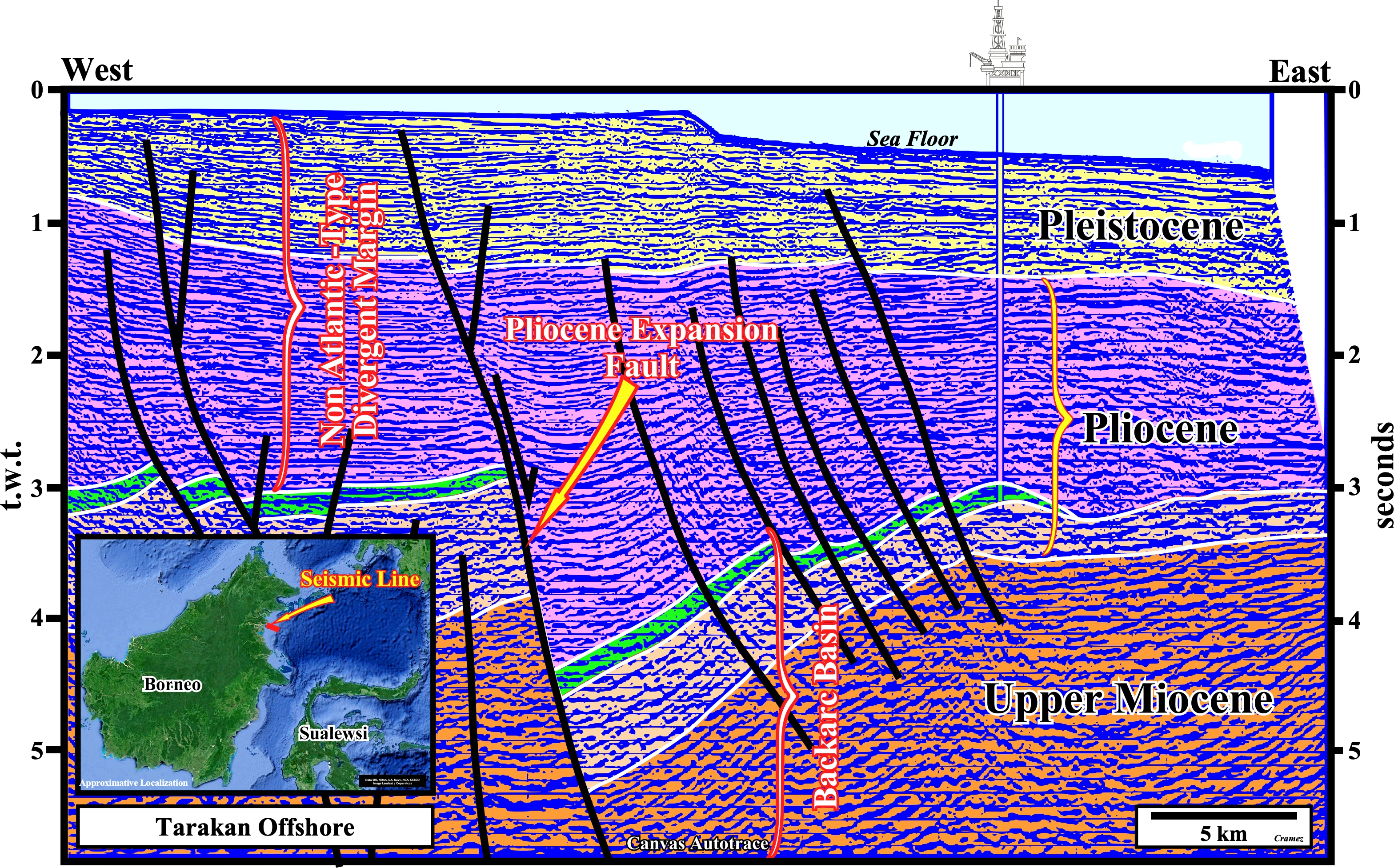
The Pliocene expansion of the non Atlantic-type divergent margin sediments toward the Celebes marginal sea is, clearly, recognized on this tentative interpretation of a Canvas autotrace of a seismic line shot on the Tarakan conventional offshore (± < 200 meters of water depth). The top of the backarc basin sediments seems to be associated with an Early Pliocene marine ingression, which individualized the shoreline from the basin edge (more or less, the outer limit of the coastal plain) displacing it continentward creating a shelf and a shelf break. Notice the position of the shelf edge depends on the sea level geological conditions (highstand or lowstand). It is the seaward limit of the continental platform (shelf), when the basin has a platform (highstand), however, when the basin has no shelf (lowstand geological conditions), the basin edge is the last continental edge of the preceding sequence-cycle (high hierarchical level of stratigraphic cycles). During the 2nd stage of development of the highstand prograding wedge (HPW) of a stratigraphic sequence-cycle as the basin has no shelf, the basin edge is last depositional coastal break of the depositional surface, which corresponds, roughly, to the continental edge.
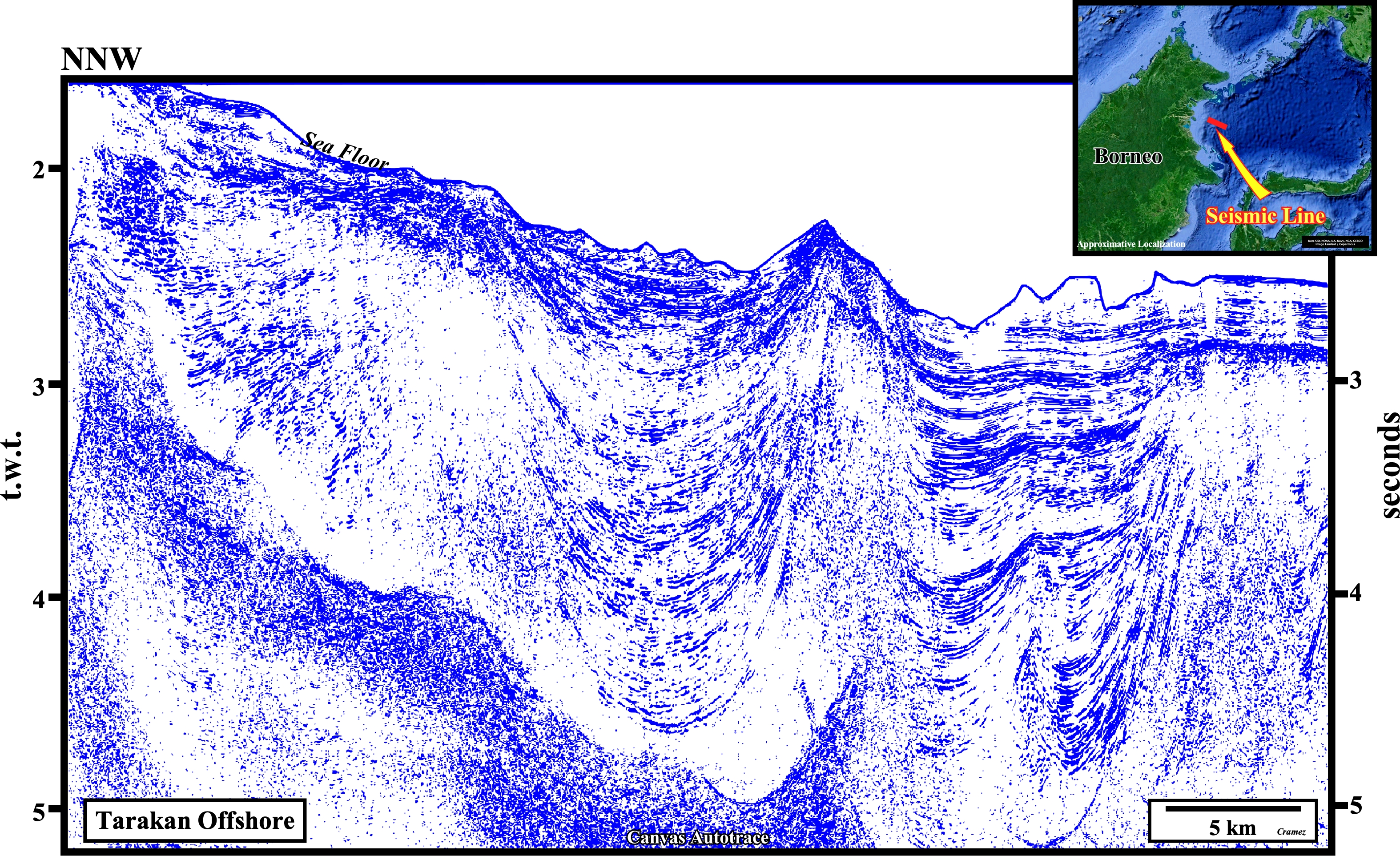
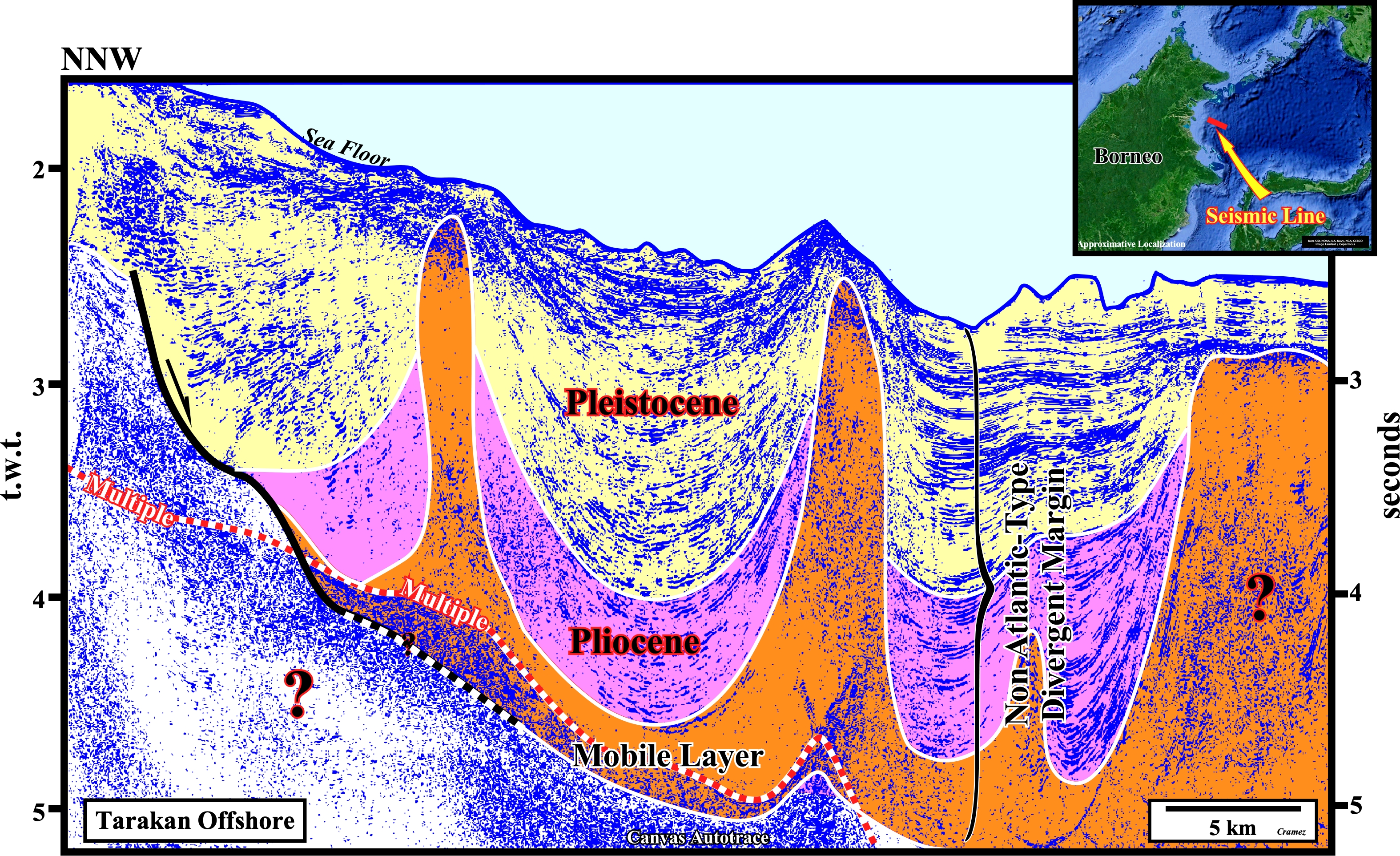
This autotrace of a deep water seismic line of the Tarakan offshore illustrates how shalokinesis (a form of shale tectonics, in which the shales, generally, under-compacted, flow by gravity, i.e., by release of gravity potential energy alone, in absence of significant tectonic stress) is important on the non Atlantic-type divergent margin under high water depth. Such a feature (argilokinesis or shalokinesis) suggests the presence of delta and prodelta environment as it is the Gulf of Mexico and Gulf of Guinea, for instance.
Send E-mails to carlos.cramez@bluewin.ch with comments and suggestions to improve this atlas.
Copyright © 2001 CCramez
Last update:
2022